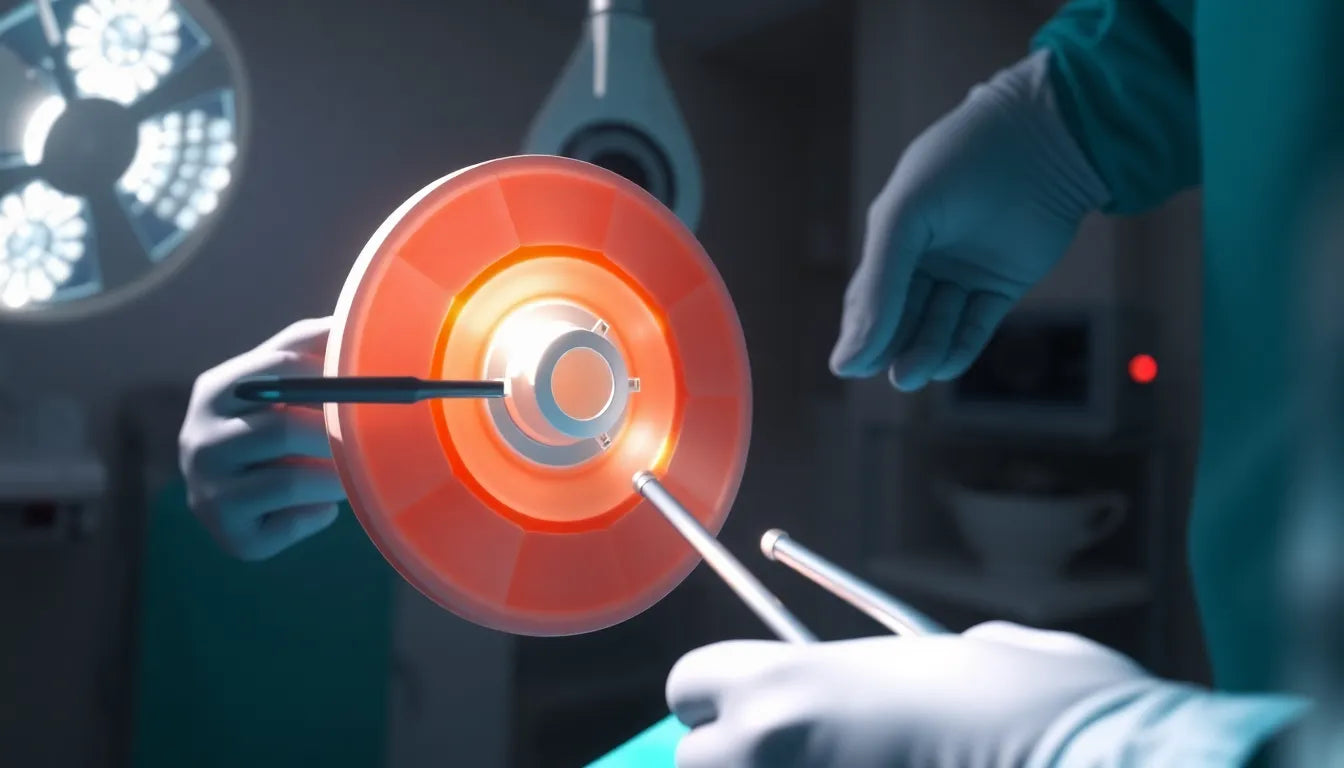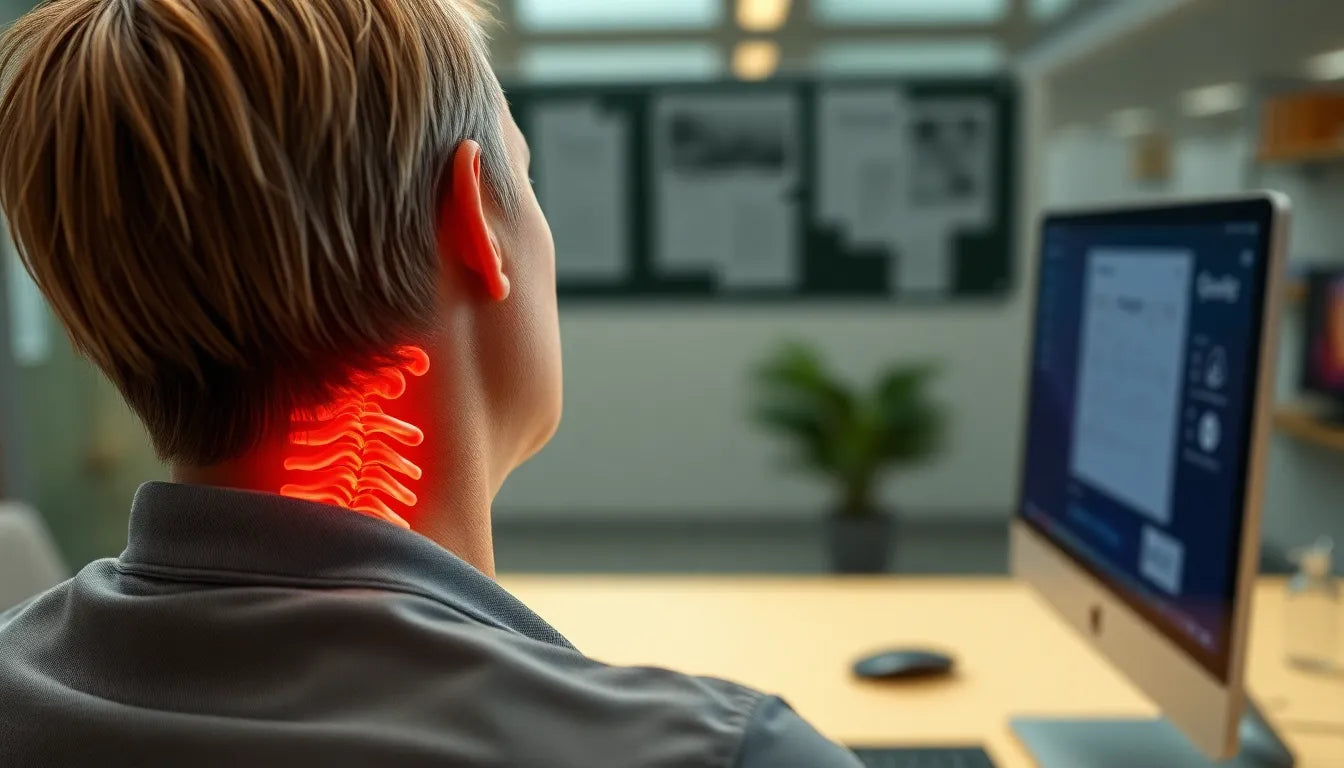Living with a herniated disc in the back can be a challenging experience, affecting both physical and emotional well-being. This blog aims to shed light on the complexities of this condition, offering insights into symptoms, treatments, and recovery strategies to help manage life with a herniated disc effectively.
understanding the basics of a herniated disc
A herniated disc, often referred to as a slipped or ruptured disc, occurs when the soft inner gel of a spinal disc pushes through a tear in the tougher exterior casing. This condition primarily affects the lower back but can occur anywhere along the spine. Spinal discs serve as cushions between the vertebrae, providing flexibility and absorbing shock. When a disc herniates, it can press on nearby nerves, leading to pain, numbness, or weakness in the back and limbs.
common causes of herniated discs
Several factors can contribute to the development of a herniated disc. Aging is a significant factor, as the discs naturally degenerate over time, losing their flexibility and becoming more prone to tearing. Wear and tear from repetitive movements or prolonged poor posture can also weaken the disc structure. Additionally, sudden strain or injury, such as lifting heavy objects improperly or experiencing a traumatic event, can result in a herniated disc. Understanding these causes is crucial in preventing the condition and managing its impact.
importance of early recognition
Recognizing the symptoms of a herniated disc early can significantly improve management and relief outcomes. Symptoms may vary depending on the location and severity of the herniation but commonly include sharp or radiating pain, tingling, or numbness in the affected area. Early detection allows for timely intervention, which can prevent further complications and enhance recovery prospects. Therefore, being attentive to these signs and seeking medical advice promptly is vital for effective management.
setting the stage for managing life with a herniated disc
Living with a herniated disc can profoundly impact daily life, affecting not only physical capabilities but also emotional health. The pain and discomfort may limit mobility, making routine tasks challenging and sometimes leading to feelings of frustration or anxiety. This blog will explore comprehensive insights into managing a herniated disc, covering symptoms, treatment options, and recovery strategies to help individuals navigate their journey toward relief and improved quality of life.
symptoms and diagnosis of a herniated disc in the back
Understanding the symptoms of a herniated disc is crucial for early detection and effective management. Common symptoms include localized pain in the back, which may radiate to the legs or arms depending on the affected area of the spine. Numbness or tingling in the limbs is another frequent indicator, often accompanied by muscle weakness. These symptoms arise when the herniated disc presses on nearby nerves, disrupting normal nerve function.
Diagnosing a herniated disc typically begins with a thorough physical examination by a healthcare professional, who will assess your symptoms and medical history. Imaging tests such as MRI or CT scans are often employed to confirm the diagnosis, as they provide detailed images of the spine, revealing the extent and location of the herniation. Early diagnosis is key to preventing further complications and tailoring an effective treatment plan.
conservative treatment options for a herniated disc
For many individuals, conservative treatment methods can effectively manage the symptoms of a herniated disc. Initially, short-term rest is recommended to alleviate acute pain, but it's important to avoid prolonged inactivity, which can lead to muscle stiffness and weakness. Gradually reintroducing activities as tolerated is crucial for recovery.
Physical therapy plays a significant role in the conservative treatment of a herniated disc. A physical therapist can design a personalized exercise program to enhance flexibility and strengthen the muscles supporting the spine. These exercises help reduce pressure on the affected disc and improve overall spinal health.
Medication is another cornerstone of conservative management. Nonsteroidal anti-inflammatory drugs (NSAIDs) are commonly prescribed to reduce inflammation and relieve pain. In some cases, muscle relaxants may be used to alleviate muscle spasms. Additionally, pain management techniques such as hot or cold therapy can provide temporary relief and improve comfort.
For individuals who do not respond to initial conservative treatments, epidural steroid injections may be considered. These injections deliver anti-inflammatory medication directly to the site of the herniation, helping to reduce swelling and alleviate pain. They are typically used when pain is severe or persistent and other treatments have not provided sufficient relief.
surgical approaches for herniated discs
While most cases of herniated discs can be managed with conservative treatments, surgery may be necessary when symptoms are severe or do not improve with non-surgical methods. The decision to proceed with surgery is based on several factors, including the severity of symptoms, the degree of nerve compression, and the impact on daily life.
Two common surgical procedures for herniated discs are diskectomy and disc replacement. A diskectomy involves removing the herniated portion of the disc to relieve pressure on the nerves. This procedure is minimally invasive and often results in significant pain relief. Disc replacement, on the other hand, involves replacing the damaged disc with an artificial one, aiming to restore normal disc function and maintain spinal flexibility.
Recovery from surgery varies depending on the individual and the type of procedure performed. Patients can generally expect a gradual return to normal activities within a few weeks to a few months. Adhering to post-operative care instructions and engaging in recommended physical therapy can enhance recovery and minimize the risk of future complications.
In conclusion, understanding the symptoms, diagnostic methods, and treatment options for a herniated disc in the back is essential for effective management and relief. Whether opting for conservative treatments or considering surgical intervention, early recognition and appropriate care can significantly improve outcomes and quality of life for those affected by this condition.
recovery and long-term management of a herniated disc
Recovering from a herniated disc in the back requires patience and a well-structured plan tailored to individual needs. The timeline for recovery can vary significantly among individuals, typically ranging from a few weeks to several months. Factors such as the severity of the herniation, the treatment approach, and the patient's overall health play crucial roles in determining the speed of recovery.
During recovery, modifying activities is essential to prevent further strain on the spine. Simple changes, such as avoiding heavy lifting and maintaining proper posture, can make a significant difference. Ergonomic solutions, including supportive chairs and adjustable workstations, can help maintain spinal alignment and reduce stress on the back during daily activities.
Long-term management of a herniated disc involves adopting lifestyle changes and incorporating regular exercises into daily routines. Exercises that focus on strengthening the core muscles, improving flexibility, and enhancing posture are particularly beneficial. These exercises not only support the spine but also help prevent future injuries. Additionally, maintaining a healthy weight reduces pressure on the spine, contributing to overall spinal health.
Ergonomic aids such as lumbar support cushions and standing desks can further assist in managing a herniated disc over the long term. These products are designed to promote better posture and reduce the risk of aggravating the condition during everyday activities.
frequently asked questions
What are the three signs and symptoms of a herniated disc?
The three common signs and symptoms of a herniated disc include localized pain in the back that may radiate to the arms or legs, numbness or tingling in the affected limbs, and muscle weakness. These symptoms occur when the herniated disc compresses nearby nerves.
How can I prevent a herniated disc from recurring?
Preventing a recurrence of a herniated disc involves adopting a proactive approach to spinal health. This includes maintaining a healthy weight, engaging in regular exercise to strengthen core muscles, practicing good posture, and using ergonomic furniture. Avoiding activities that involve heavy lifting or sudden twisting motions can also help reduce the risk.
Are there specific exercises I should avoid with a herniated disc?
While exercise is beneficial for recovery, certain activities may exacerbate symptoms. It is advisable to avoid high-impact exercises, heavy lifting, and movements that involve twisting or bending the spine excessively. Instead, focus on low-impact activities like walking, swimming, and specific exercises recommended by a physical therapist.
How effective are non-surgical treatments compared to surgical options?
Non-surgical treatments are often effective for many individuals, providing relief from symptoms and improving function. These treatments include physical therapy, medication, and lifestyle modifications. Surgery is typically considered when conservative treatments fail to alleviate severe symptoms or when there is significant nerve compression. The effectiveness of each approach depends on individual circumstances.
What are some ergonomic products that can help with recovery?
Several ergonomic products can aid in the recovery and management of a herniated disc. Lumbar support cushions, adjustable chairs, and standing desks promote proper posture and reduce strain on the spine. Additionally, ergonomic keyboards and mouse devices can help maintain alignment during prolonged computer use, contributing to overall comfort and spinal health.


















